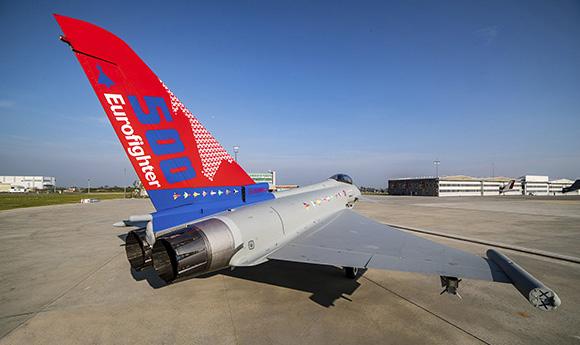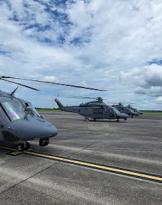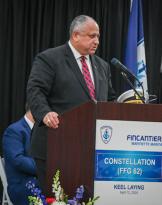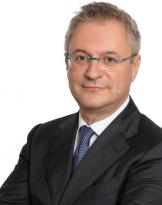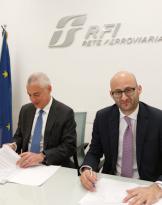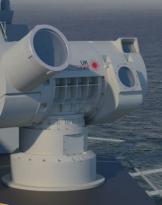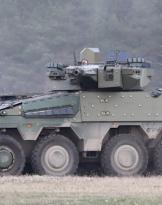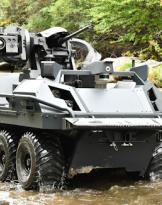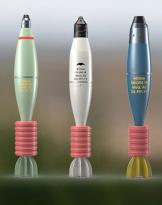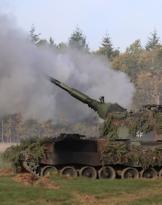Today, at the headquarters of Leonardo spa in Caselle (Turin), the ceremony for the delivery of the 500th Eurofighter took place Typhoon to the Italian Air Force. Guests began to flock to the event-ready angar starting from the 10.30 and at the 11.00 Filippo Bagnato, director of the state's aeronautical division, Volker Paltzo, CEO of Eurofighter Jagdflugzeug, Peter Schmidt, spoke representation of NETMA, and gen. Gabriele Salvestroni, commander of the Italian Military Aeronautical logistics sector.
As stated by the managing director Paltzo the Typhoon, with over five hundred deliveries all over the world, stands as one of the largest and most capable combat aircraft and is set to represent the backbone of the aviation industry for the next decade. Wet had in fact affirmed shortly before that this product highlights the success of the joint venture plan at European level between Spain, Germany, United Kingdom and, of course, Italy.
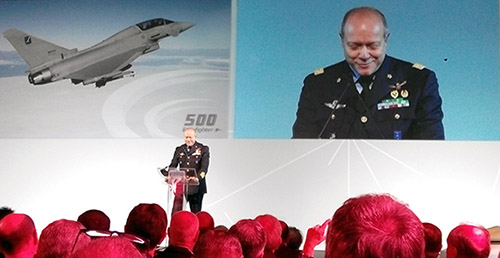 A highly significant piece of the technology developed for the construction of the Typhoon was then delivered to the Ambassador of the State of Kuwait, present due to the latest orders that the Middle Eastern State has signed for the Eurofighter, and a model of the 500 number jet to the general Salvestroni, a model that was then delivered to all Leonardo's guests, who came with great curiosity and interest.
A highly significant piece of the technology developed for the construction of the Typhoon was then delivered to the Ambassador of the State of Kuwait, present due to the latest orders that the Middle Eastern State has signed for the Eurofighter, and a model of the 500 number jet to the general Salvestroni, a model that was then delivered to all Leonardo's guests, who came with great curiosity and interest.
The gift of a piece of the structure of a fighter is an extremely special gift, but it sums up the technological effort that has led to the engineering of new advanced technologies, such as the one that "churns out" of monolithic titanium panels, through a unique process by introducing inert gas under suitable conditions, which allows a sort of "chemical union" to be obtained, which is very different from a weld, especially from the structural point of view.
He then followed, surrounded by a suggestive combination of lights and music, the unveiling of the five hundredth colored aircraft of a very special livery: on the sides of the plane there are many small stylized Typhoons depicting the flags of the eight countries that adopted it (Germany, Italy, Spain, Great Britain, Austria, Saudi Arabia, Oman and Kuwait).
The first and the hundredth plane were delivered to the United Kingdom, the two hundredth and fourteenth to Germany and the three hundredth to Spain.
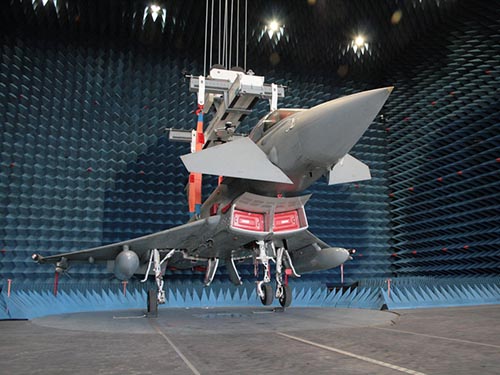 The day then ended, before lunch, with the take-off and overflight of a couple of Eurofighters (the proximity to the civil airport and the inhabited center unfortunately allowed nothing more).
The day then ended, before lunch, with the take-off and overflight of a couple of Eurofighters (the proximity to the civil airport and the inhabited center unfortunately allowed nothing more).
Meanwhile, along the path that led from the parking lots to the structure set up for the ceremony (which was also an opportunity to see, the anaechoic chamber used in the same development of the "Typhoon" for the verification of electromagnetic interference), the Leonardo parked in static display i flagship aircraft of a vast family that covers all the possible nuances of what is called "Air Defense": a C 27-J "Spartan" (in its latest version equipped with "winglets", an ATR-72 MP for patrolling maritime of the 41 ° Stormo, and then "the two brothers": an M-345 with a truly appealing livery and an M-346 (we were "used to" seeing it under construction "Advanced Trainer", here instead in aggressive set-up "Fighter Attack "next to his remarkable radar." "Brothers" because despite the name Leonardo has incorporated a vastness of companies, both still show here and there some words "Aermacchi "But not only: their" avionics suite "is largely shared, as is the whole instrumental training device for ground training, which we had already visited in Galatina (LE) at the 61 ° flock long ago (v.articolo).
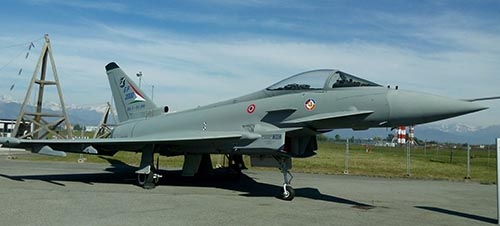 A reference to the origins and development of the "Eurofighter" could not be missing: the third 3 prototype of the Typhoon, with his silent, imposing presence he embodies what was said in the intervention of the engineer. Wet:
A reference to the origins and development of the "Eurofighter" could not be missing: the third 3 prototype of the Typhoon, with his silent, imposing presence he embodies what was said in the intervention of the engineer. Wet:
A story of international collaboration born in the 1980, when in a very different context the "Erasmus" university program was born in a European context of a certain type that is present again in a European context of another type, but equally difficult and that equally requires international sharing of resources, also and above all engineering and scientific.
In the 1980 our air defense had as a backbone, especially for the interceptor functions, the F-104 task left to the Typhoon after a brief interlude with i Tornado ADV. We therefore ask a “combat ready” military pilot on the F104 (first) and on the “Typhoon” (after) what such a gap in technology means from the pilot's point of view.
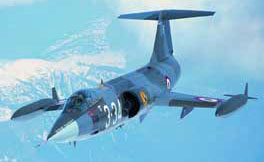 "Obviously they are two completely different airplanes for the generational leap made. In both cases we descend from the sweaty airplane, but for very different reasons. The F-104 required constant attention to the machine and to respect its operating parameters and functional.The Eurofighter is much easier and safer, but from the mission management point of view it requires as much commitment and attention.The Eurofighter avionics is very complex and to complete the mission is therefore, in short, highly challenging. But on another front ".
"Obviously they are two completely different airplanes for the generational leap made. In both cases we descend from the sweaty airplane, but for very different reasons. The F-104 required constant attention to the machine and to respect its operating parameters and functional.The Eurofighter is much easier and safer, but from the mission management point of view it requires as much commitment and attention.The Eurofighter avionics is very complex and to complete the mission is therefore, in short, highly challenging. But on another front ".
Considering, now, that the start of the Eurofighter project dates back to 1980, it seems legitimate to make a prediction about what we could say - skipping the AM period of the dated F-16s (leasing program Peace Caesar) - of the “Eurofighter Vs. F-35” comparison, given the continuous media and political attention that the F-35 raises.
"Here too we are facing an airplane, the F-35, belonging to a subsequent generation. The difference, however, is not only from the performance point of view, indeed. From this point of view the Eurofighter is certainly superior to the F "35. But the direction of the development of this weapon system is in the avionic architecture. The F-35 has what is called an" open architecture "and therefore allows for margins of collection and" assembly "of information," which allows us to construct a "situation awarenes" that IV generation aircraft are unable to supply. Therefore in this perspective there is an overcoming both from the avionic point of view and from the sensory point of view which is significant. aircraft will still be further simplified, also because the mission profile will no longer require extreme maneuvers or particularly complex profiles, but the interpretation of the information that the sensors will receive will become complex. or in an increasingly complex "battle space" so that the pilot can benefit from it, also and above all in a context made up of several aircraft, to make the most suitable choice ".
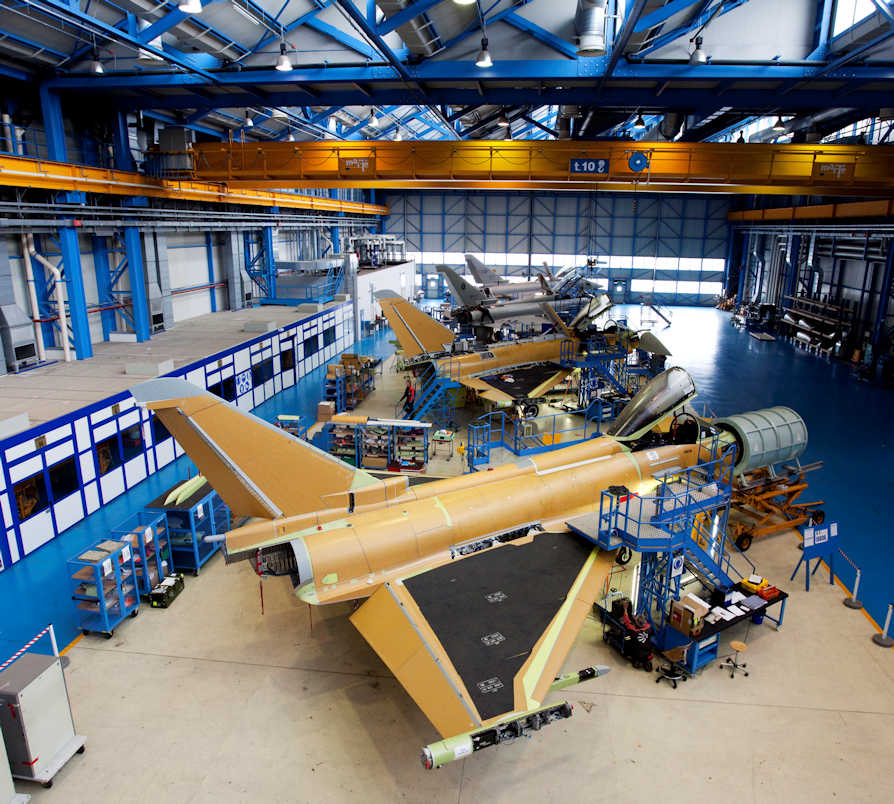
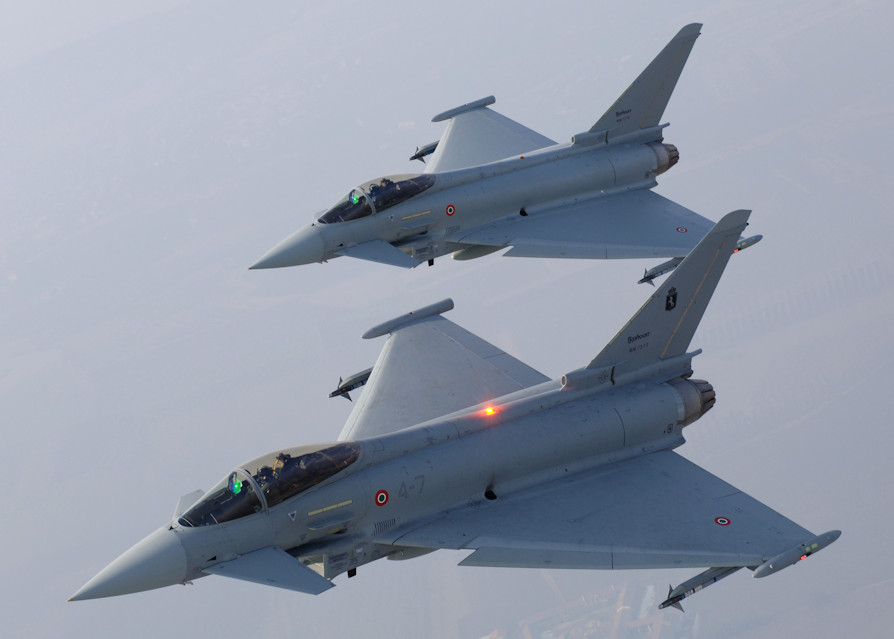
(photo by the authors / Leonardo / Aeronautica Militare)

